Front arc
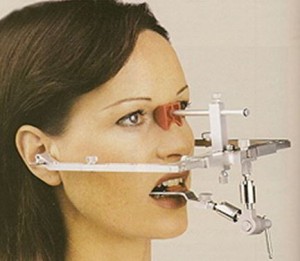
In most cases, for successful orthopedic and orthodontic treatment, it is necessary to take into account the peculiarities of the dentition of the patient.
It is not easy to identify them in the eye, so special equipment comes to the rescue - an articulator and a facial arc.
Currently, all orthopedic structures are made using the front arch.
This is necessary to obtain a high-quality result of prosthetics.
What is the facial arch
Facial arch in dentistry has two definitions:
The front arch in orthodontics is an additional design that is used to correct the bite in conjunction with the bracket system.
- It is used to restrain the growth of the jaw and prevent the displacement of the posterior teeth.
- The construction can be worn around the clock or limited to 10 or 14 hours.
- Using an arc allows you to get the best results.
The facial arch in orthopedics is a mechanical device that acts as a template and serves to determine the location of the jaws in three-dimensional space.
- The facial arch is a U-shaped metal plate, which is fixed in the ears or temporomandibular joints with the help of ear (or articular) stops, and ends at the central incisors.
- The part that attaches to the teeth is called a bite fork.
- It is attached to the front arch using a three-dimensional locking device.
- Using the front arc, the parameters of the position of the upper and lower jaw and their movement are removed.
Orthopedics Application
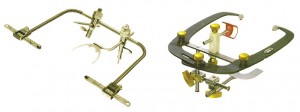
There are two types of facial arches:
- Mid-anatomical type of arc (portable arc). It is fixed with the help of ear (articular) stops at the point of rotation of the condyles. It is widely used for prosthetics with full removable dentures.
- Kinematic arc (axial) - allows you to get more accurate results.
When applied
The front arch in orthopedics is used:
- To determine the ratio of the lower and upper jaws relative to the craniofacial system.
- To transfer the position of the upper jaw and the axis of rotation - the lower to the articulator.
- To determine the axis of rotation of the mandibular condyle.
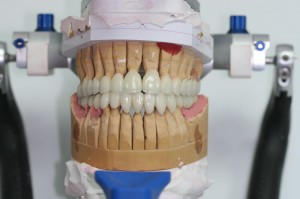
To register the bite, with the help of a silicone mass or thermoplastic material, prints are obtained.
After measurements are taken, the facial arch is removed and the obtained parameters are transferred to the articulator, which is a special device that allows you to simulate the movements of the lower jaw.
As a result of the use of the facial arch, the dental technician receives jaw models with the correct orientation and trajectory of the patient's jaws.
Benefits
- The number of visits to the dentist for the installation of a denture is reduced.
- The finished design is convenient and comfortable for the patient.
- The period of getting used to the design is significantly reduced.
- The effectiveness of the restoration of chewing function.
- The load on the teeth is correctly distributed, which increases the life of the prosthesis or restoration, as well as supporting teeth or implants.
- High esthetics and naturalness of the patient’s smile.
- Successful achievement of a cosmetic effect.
- The harmonious arrangement of the front teeth, relative to the location of the nose, eyes, lips.
The value of the front arc is the elimination of possible errors in the occlusion and orientation of the models in the articulator.
Video: “Dental prosthetics Facial arch”
Use in orthodontics
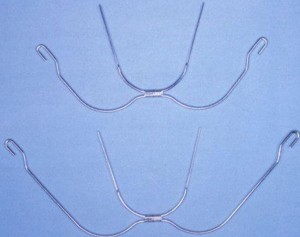
The front arch in orthodontics is a device used to create a place in the dentition by moving the teeth posteriorly.
Orthodontics recommends using the facial arch in the following cases:
- If it is necessary to ensure the correct location of distant chewing teeth after the removal of highly crowded teeth.
- If the front teeth are very crowded, then to free up space you need to move the molars a little back.
- To prevent early movement of the posterior teeth when aligning the front row teeth.
- During the formation of the dentition in adolescence.
- Thanks to the use of the facial arch in orthodontics, it is possible to obtain better results when correcting the occlusion and aligning the teeth.
The structure of the orthodontic facial arch
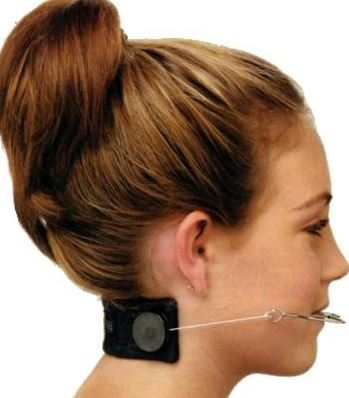
The device consists of two parts:
- Internal (intraoral). The internal part of the arc is fastened to rings worn on the abutment teeth.
- The outer (extraoral) part, which is fixed on the head or neck of the patient.
Depending on the fixation point of the equipment, the following types of arcs are used:
- Head mount design.
- The device is mounted on the neck.
- With attachment to the neck and head.
What you need to know when using the front arc
If for the correction of a defect it is necessary to use a facial arc, then you should know that:
- When using the design, it is necessary to visit the general practitioner - dentist at least once every six months to carry out planned rehabilitation of the oral cavity.
- It is necessary to regularly undergo an examination by a hygienist and follow all his recommendations on oral hygiene and strengthening tooth enamel.
- In case of periodontal disease, before starting orthodontic treatment, it is necessary to obtain the permission of the periodontist's doctor to install the structures.
- If there is a history of allergic reactions, it is necessary to undergo an examination with an allergist before installing the device.
- If there are depulled teeth, enamel defects, chips, restored by fillings, then when removing braces, part of the crown may be broken off, enamel chips and other complications that must be eliminated at the reception of an orthodontist or dentist - therapist.
- In the presence of depulled teeth, the duration of orthodontic treatment is lengthened.
- Orthodontic treatment cannot solve the problems with the mandibular joint on its own. The treatment of such diseases is carried out together with the dentist - surgeon.
- With pronounced forms of malocclusion, joint treatment by an orthodontist and a surgeon may be required.
- In most cases, orthodontists recommend wearing a facial arch from 10 to 14 hours a day for several months. As a rule, such a time period allows you to use the device only at night and exclude its use in the daytime.
- If, when using the design, such phenomena as gum hyperemia, swelling or bleeding are observed, then you should immediately consult a doctor to adjust the strength and eliminate the problems that have arisen.
- The facial arch must be treated with increased attention. It is recommended that you use the extraoral device only when it is awake while watching TV, reading or sleeping.It is strongly not recommended to use the arc during sports or active games, as careless action can cause personal injury.
- Safer are the designs that are attached to the neck. If the arc is fixed on the head, then it is necessary to observe safety measures, especially during sleep, when the device can jump off and injure the face or even worse - get into the eyes.
- To avoid such complications, you should try to sleep on your back. In this position, there is no chance of structural failure. Before you go to bed, you must definitely check the mounting of the device for reliability.
- If you experience discomfort or breakdown when using the device, you should immediately consult a doctor.
Cost
The cost of construction is influenced by:
- Type of fixation: head or neck.
- The condition of the patient’s oral cavity.
- The age of the patient.
The cost of the facial arch is usually calculated after examining the patient and studying the x-ray.
- The orthodontic facial arch is universal, but requires individual adjustment.
- Before you install the orthodontic design, a panoramic picture of the oral cavity and an x-ray of the jaws are taken.
- Facial arc prices for children and adults may vary.
On average, the cost of treatment using the facial arch is from 2500 up to 9000 rubles.
Photo: before and after
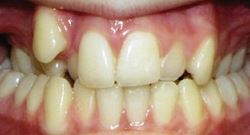 |
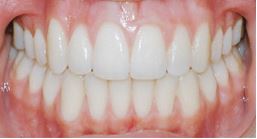 |
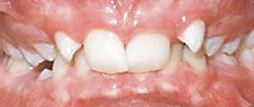 |
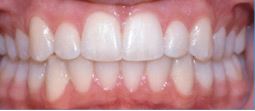 |
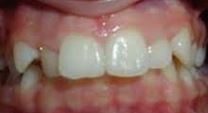 |
 |